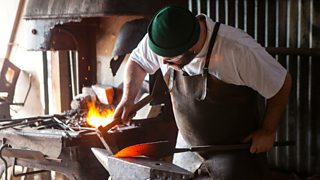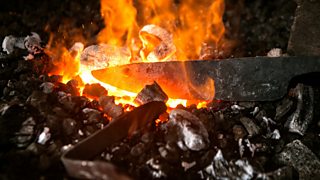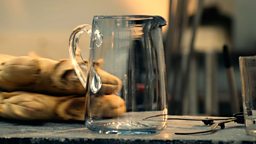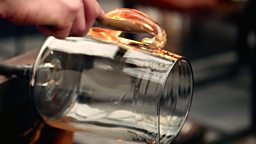Making Handmade: the director’s commentary
By Ian Denyer
After the commission was first discussed with the Executive Producer in I knew this would be groundbreaking television, in part because the ground itself was old. These films would be a celebration of making in a way not attempted since the single-shot Interludes of the 1950s.
The brief was brief: no words, no music, long, very long held shots I added my own restrictions – no shot less than ten seconds, and no movement of the camera.
On the first reconnaissance of the locations I investigated the possibilities of single shots lasting as much as five minutes.
All the action would come to the frame, as it did for the pioneering film makers.
Having grown up being constantly asked to move the camera more and in the edit cut shots shorter and as times changed and with them, TV fashions, more pacily, this was a joy.
This was a chance to celebrate craft on both sides of the camera.
The films would have no commentary or music, so the soundscape, the audio portrait of the story as recorded on location, was always going to be of paramount importance.

The images would be long held and often very close-up, and capturing the noise of tools and materials, even the breath of the artisans as they exerted themselves, would be challenging and exciting.
Film Sound Recordist David Harcombe and I had recently worked together on a ���˿��� series about Queen Victoria, and his forensic approach to capturing the tiniest sounds had given those films great depth. He came with me came on a second set of recces with technical needs in mind. He opted for a stereo rig for most close-ups, augmented by an array of microphones in fixed positions.
The sound was the starting point for some shots - when Bladesmith Owen Bush first appears he moves around his forge yard between a group of hidden microphones, but is also wearing tiny transmitting microphones inside his shirt and taped into his turn-ups to deliver the delicate crunching of boots through drifts of steel waste.
Some of the usual sound issues were irrelevant – on such long shots police sirens and aircraft would come and go, part of the story. Other challenges arose. Moving from extreme close-ups to explanatory wide-shots while maintaining realistic perspective and audio continuity was difficult, but the results paid off in the extremely dense sound dubbing and mixing sessions - two whole days for twenty-nine minutes featuring very few images.
Under time pressure, most directors of factual films must concern themselves with the performance of the talent and contributors and the overall narrative, and leave a percentage of the camerawork – the composing or framing of shots, to the camera operator. In this case, having broken down the process, I was free to indulge my first love, which is the composition of the image.

Deciding on which person would be behind the camera wasn’t difficult, in part because, once word of this project got out, several senior camera persons were on the phone. In the event I chose Director of Photography Andrew Muggleton. We’ve worked together for twenty years, all over the world, and frequently on actual film. It’s a system of working that brings with it technical challenges and dictates a slower pace of work than is often practical when working with digital camera technology. In this case we were able to bring the discipline and work-rate of a film shoot, though we weren’t actually using it.
From the start we knew we’d have enough time, even for the making of the Windsor chair, the most complex of the three films, so we decided to shoot using Andrew’s comprehensive collection of prime lenses. Without the need to zoom in suddenly to capture something unexpected – because by the time we started shooting nothing was, these much higher quality fixed-length lenses came into their own. Many of them were very fast – having a large maximum aperture available making it possible to shoot without adding lots of extra light – and from the start, illumination was a key consideration.
Great DoPs are in part defined by the way they light a scene. Andrew’s minimalistic approach to lighting and painterly eye were perfect for this very unusual project, and in the event, after another set of technical visits to the locations, he opted to shoot as far as possible by natural, or available light.
In the event, Metal and Wood were both shot during GMT and where extra light was needed it came from large lamps that, erected on tall stands outside, provided realistic-looking daylight when the real thing had gone. On Glass, Andrew’s challenge was actually cutting out extraneous light in Michael Ruh’s hot, very bright studio.



